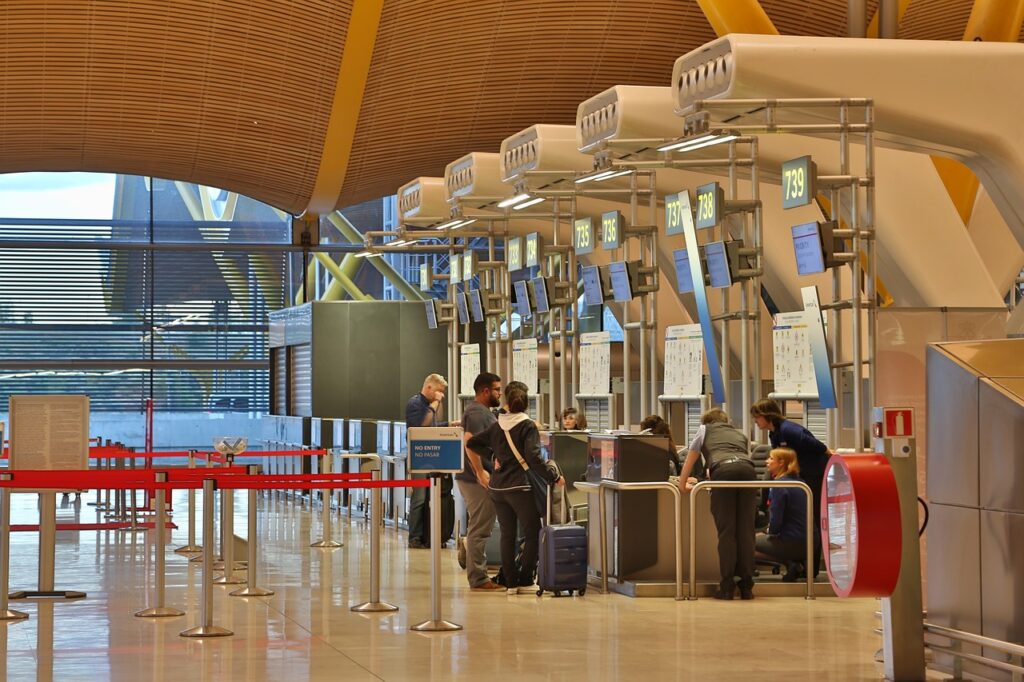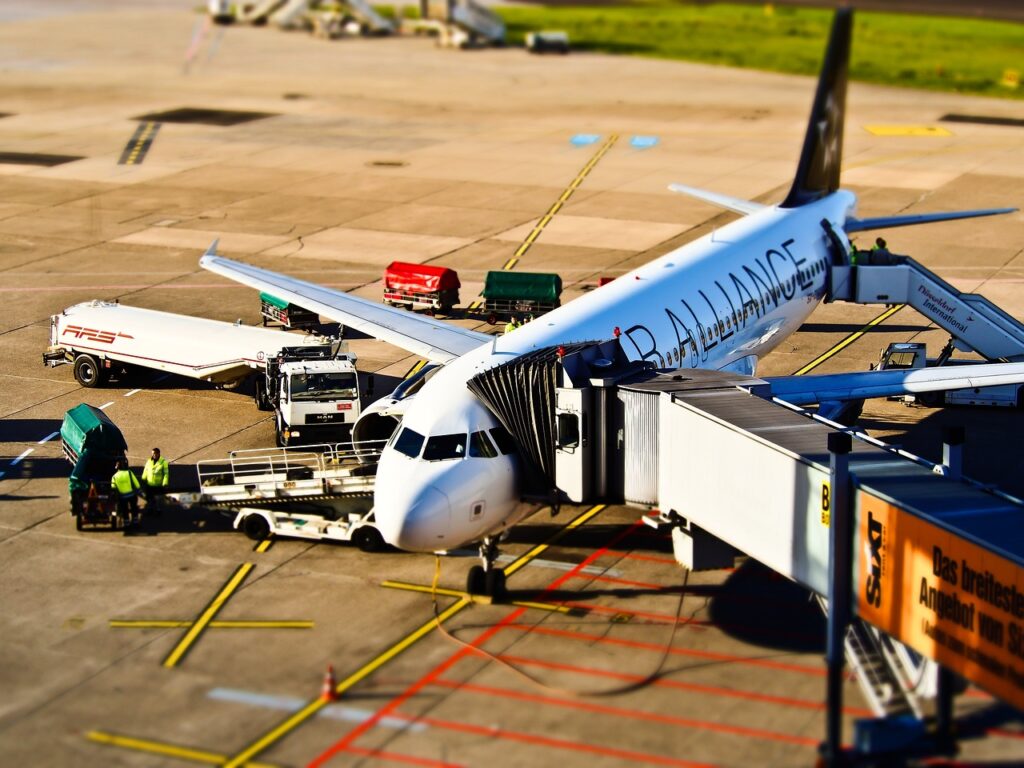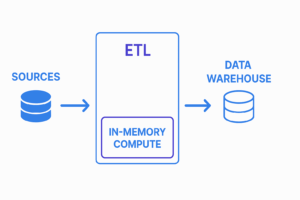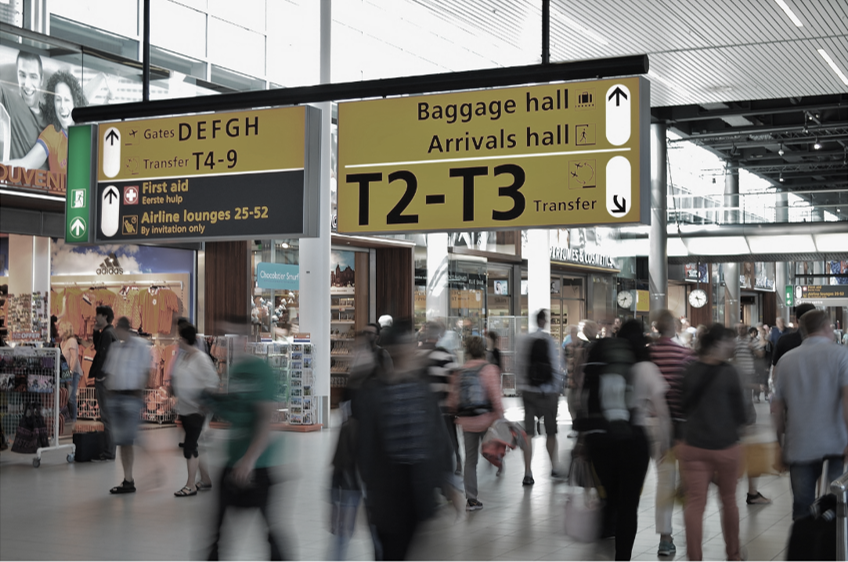The Ground Handling journey – today and tomorrow
In today’s blog we are discussing how Operational Analytics (OA) enables the aviation Ground Handling industry to deliver their services to airlines. Aviation is one of the most complex industries out there, so it offers a wealth of examples (plus it’s also close to our hearts).
OA defines analytics that occur “on the fly”, where decisions are made on the spot either by the relevant SMEs or systems. OA relies heavily on real-time, production-grade data that flows from many business areas to offer instant feedback. It lets you flow information automatically from sensors, systems, DW, etc. to decision-making people, tools and apps.
OA’s purpose is to improve business efficiency through the streamlining of operations, enabling fast decisioning (real time allows proactive approach to developing issues), lowering costs (heavy automation), increasing revenue (dynamic packaging/pricing, up-sales), and promoting better collaboration through live data sharing.
OA comes after BI, a result of the analytics and management decisions that are put in production. Properly executed, OA makes a significant positive impact on the effectiveness of operations and the bottom line.
Ground Handling
But before we dive in, we need to tell you a bit about the industry. Ground Handling (GH) is a series of activities at the airport that revolve around preparing (handling) the aircraft for a flight. These activities include operations at the ramp (gate) baggage handling, passenger handling, catering and dispatch management. It is essentially a logistics operation, but the one that also deals with the movement of people.
We will describe GH from the point of the view of the passenger, as this is how most of us get to interact with it. There are five distinct but overlapping activities taking place before the flight departure. Some are happening without you ever seeing them. Others take place from the moment you begin your check-in and bag drop.

Aircraft preparation
Depending on the time of day, this activity can happen overnight or between flights.
- Cabin tidying – cleaning seats, waste disposal (de-gash), cleaning galleys and lavatories. Cabin reset to make it look fresh, including new brochures, blankets, headphones, etc
- Draining of waste tanks
- Security check of the aircraft
- Refilling of the water tanks
Low-cost carriers would perform these tasks over very short time windows, 25-30min, during the turnarounds.

Passenger processing
This activity is the most visible to us passengers. We interact with the GH staff directly.
- Check-in counter services for the passengers departing on the customer airlines
- Providing gate arrival, transfer and departure services. Agents meet flights upon arrival and see it off on departure by assisting with passenger boarding and closing the flight
- PRM services supporting passengers that require assistance at the airport
- Customer service and airline lounge staff

Ramp service
Ramp service takes place around the aircraft on the ramp (parking spot). You can often these when you look out of the airport windows near the boarding gates. There is normally a hive of activities taking place right up to the aircraft taxiing out.
- Aircraft marshalling – the person waving glow sticks to guide the aircraft to its stand
- Towing and pushback of the aircraft
- Air conditioning and heating hoses
- Little wheeled trains full of luggage
- Fuelling trucks
- Air cargo container loading/unloading
- GPU or ground power for the aircraft so they don’t expend jet fuel
- Stairs/aerobridges provision and passenger marshalling if using stairs
- Wheelchair lifts, as needed
- Airstart system for the engines
- In certain adverse weather conditions, de-icing of the aircraft, but normally it takes places at designated areas

Catering
Catering deals with the food provision to the aircraft. Traditionally, the food would be prepared at the catering kitchens, sorted into trays and loaded in service trolleys along with drinks.
On the shorter journeys, many airlines now offer pre-packaged food (sandwiches, snacks), that bypass the kitchens and are delivered from a warehouse instead.
A “duty free” shop will also be loaded at the same time.

Field operation service
Field operation service dispatches the aircraft, coordinates with the airline operation at the airport and with the ATC.
These activities follow careful planning and orchestration by multiple parties. Data is at the heart of this process. Decisions are made by people, but the OA drives them.
Before you ever get on your flight, extensive behind-the-scenes planning has already taken place. Flight schedules go on sale often more than a year in advance, so the ground handlers can start using that data to plan their activities, like how much personnel we should hire, machinery to add, etc. The airlines issue this data in batches, normally in an industry-defined standard (SSIM). The schedules show dates and times of departure, destinations, equipment, among other parameters. GH analyst will feed the data to their analytical systems to begin resource planning. At this point, the data is likely to change, but it is broadly accurate.
As the time gets closer to departure, more and better clarity data starts to arrive, such expected passenger loads and baggage, updates to departure times and aircraft changes, special meals, passengers requiring assistance and so on. The planners go through this data and develop service delivery schedules, rosters and equipment deployments. This stage is very important as the planning involves multiple people and departments. All must come together in concert to ensure the arrival or departure takes place on time. Each stage of the flight processing must be “manned” (check-in, baggage, special assistance, etc), equipment made available at the ramp, people and systems updated with the latest data at the exact specified times. Else delays will occur. And they do.
Multiply the above process by the number of flights departing and arriving daily at busy airports like Dubai, Heathrow or Incheon and you can imagine the scale of the task the ground handlers are dealing with there. Dozens of flights every hour moving in and out of their gates and stands in total harmony. It’s quite a sight and calls for admiration for the folks who deliver it time and time again. Especially when you realise how much the odds are stacked against them.
The system is not perfect by any means. Even on a good day without major disruptions, things tend to go wrong. Misplaced baggage, broken equipment, reservations systems glitching, staff sickness are just a tip of the proverbial iceberg that make the jobs of the GH challenging. Timely information is not always available to the people on the ground or, in fact, to the controllers. Buffers and standbys are quickly consumed but not necessarily in the right places. People are overworked and stressed, leading to high attrition.
The GH processes and systems were developed years ago and are often quite archaic. They are “vertical” by nature, meaning they are self-contained and solve a narrow function, such as passenger processing or catering. Cross-system interoperability is not a feature (you may get a CSV output or an API in rare cases). The rest is up to the data engineers to figure out.
While better automation is being used in the more modern airports, the various systems tend to be disparate, not well interconnected (if at all!). I still see dot matrix printers screeching load sheets at Rome, fax machines in Japan and handwritten (multi-page) forms in pretty much all airports I have been to. These forms are not always digitised and get lost all the time. Plenty of hand-written passenger manifests never make it to the data warehouses.
But even the digital tools in use today are often out of date. Have you ever noticed the screens of the reservation systems at check-in? No, not the fancy self-check-in kiosks, but the ones operated by the agents. Some of them were designed in the 90’s. I’m always amused to see the puzzled and annoyed faces of the agents when they are trying to do something different from the regular check-in process.
Generally, the airports will have a system in place that takes care of a particular function, such as check-in/reservation, flight information, baggage processing, catering, security, immigration, boarding, etc. But they are disparate and do not automatically share data between them. A flight may have landed already, and bags are on the belt, but the status screen will still say “estimated”. These systems were developed by different vendors and focus on just their specific functions. There is not much in terms of data sharing amongst them.

Have you ever wondered why you must show your boarding pass and passport at various locations at the airport? Depending on the journey and country, this can happen four times – check-in, security, immigration and boarding. It is because the immigration system is ring-fenced, the check-in system only checks the passenger details against the booking, and the airport does not know who you are without a boarding pass and ID. None of it is shared dynamically.
Why do you need to go through the security check again when transferring from one flight to another? You have already gone through the security at departure. All these steps create bottlenecks in the passenger journey to and from the aircraft, delay the GHs and get everyone frustrated. No wonder we all hate the “airport experience”.
We have worked in the aviation industry for many years, and I am yet to see a positive breakthrough in the airport and GH areas. If anything, it seems to be getting worse. COVID 19 did not help, mind.
But it is not all “doom and gloom”. While the aviation industry needs to bring together government, technology developers, air traffic control, airlines, airports and ground handlers and develop a framework to enable better data sharing, the GH operators are getting on top of the issues under their direct control. They understand that standing still and waiting for the industry solution is not sustainable for them. Disruptions cost them big money (GH pay penalties for missed SLAs for one).
The profit margins are tight, and the business is very competitive. Efficient service delivery leads directly to cost saving and commercial success. Good service and ability to charge less than the competition win new customers. It all makes a material difference.
To gain that efficiency, the GHs understand that they need to get on top of their data, automate big chunks of their decision-making and empower the personnel on the ground with real time insights. If they can better predict where the disruption is likely to occur, they can allocate the resources more efficiently. If they can react quicker to the developments on the ground, they can minimise the impact of the disruption. And if they can share information in real time, the central control and handling agents can make more optimal decisions on the fly. They clearly see the potential better OA will deliver, so they focus heavily on it.

Better data collection and sharing will enable more robust planning and insights. Reliable data fed from the field, weather, authorities, airlines, rostering, etc will power the ML/AI models, further enhancing efficiency. Operational data is streaming automatically from the various sources and updates are made in real time. If a flock of birds is suddenly spotted near the airport (happens much more often than you may think), the system can calculate the likelihood of an arrival delay and update the GH schedules dynamically. The resources could then be used to help other gates, for example.
We have developed IOblend to act as the OA bridge between the disparate systems, sensors and SMEs. No matter how archaic the systems are, we can get the data out of them. We take care of the data automation, management, governance and quality policies in real time, so that the ground handlers can focus on the value-add activities fast. We help you design a robust (future proof) data architecture so that it will scale easily and allow to swap for new tech much more seamlessly than today.
IOblend revolutionizes data pipeline management by offering real-time, production-grade Apache Spark™ data pipelines that accelerate data migration from on-prem to cloud, and enable easy integration of streaming and batch data for operational analytics and AI needs. Its end-to-end data integration solution is designed for both centralized and federated data architectures, with seamless integration with Snowflake and Microsoft Azure products. Emphasizing on DataOps, IOblend automates and simplifies the development of data pipelines, managing everything from data lineage to error management, thereby catering to a variety of use cases from streaming live data for forecasting models to managing IoT sensor data. This versatility and robustness in managing data estates make IOblend a critical tool for organizations aiming to leverage their data efficiently and effectively.

PoC to Production: Accelerating AI Deployment with IOblend
PoC to Production: Accelerating AI Deployment with IOblend 💭 Did You Know? While a staggering 92% of companies are actively experimenting with Artificial Intelligence, a mere 1% ever achieve full maturity in deploying AI solutions at scale. The AI Production Journey A Proof of Concept (PoC) in AI serves as a small-scale, experimental project designed

AI in Healthcare with Smart Data Pipelines
AI in Healthcare: Powering Progress with Smart Data Pipelines 💉 Did you know? Hospitals in the UK alone produce an astonishing 50 petabytes of data per year, more than double the data managed by the US Library of Congress in 2022! What are Data Pipelines for AI Model Training? In the context of healthcare, this means

The Urgency of Now: Real-Time Data in Analytics
The Urgency of Now: Real-Time Data in Analytics ✈️ Did you know? Every minute of delay in airline operations can cost as much as £100 per minute for a single aircraft. With thousands of flights daily, those minutes add up fast. Just like in aviation, in data analytics, even small delays can lead to big

Still Confused in 2025? AI, ML & Data Science Explained
Still Confused in 2025? AI, ML & Data Science Explained…finally It seems everyone in business circles talks about these days. AI will solve all our business challenges and make/save us a ton of money. AI will replace manual labour with clever agents. It will change the world and our business will be at the forefront

Beyond Spreadsheets: The CFO’s Path to Data-Driven Decisions
Beyond Spreadsheets: The CFO’s Path to Data-Driven Decisions 📊 Did you know? Companies leveraging data-driven insights consistently report a significant uplift in profitability – often exceeding 20%. That’s not just a marginal gain; it’s a game-changer. The Data-Driven CFO The modern Chief Financial Officer operates in a world awash with data. No longer solely focused

Shift Left: Unleashing Data Power with In-Memory Processing
Mind the Gap: Bridging Data Shift Left: Unleashing Data Power with In-Memory Processing 💻 Did you know? Organisations that implement shift-left strategies can experience up to a 30% reduction in compute costs by cleaning data at the source. The Essence of Shifting Left Shifting data compute and governance “left” essentially means moving these processes closer

